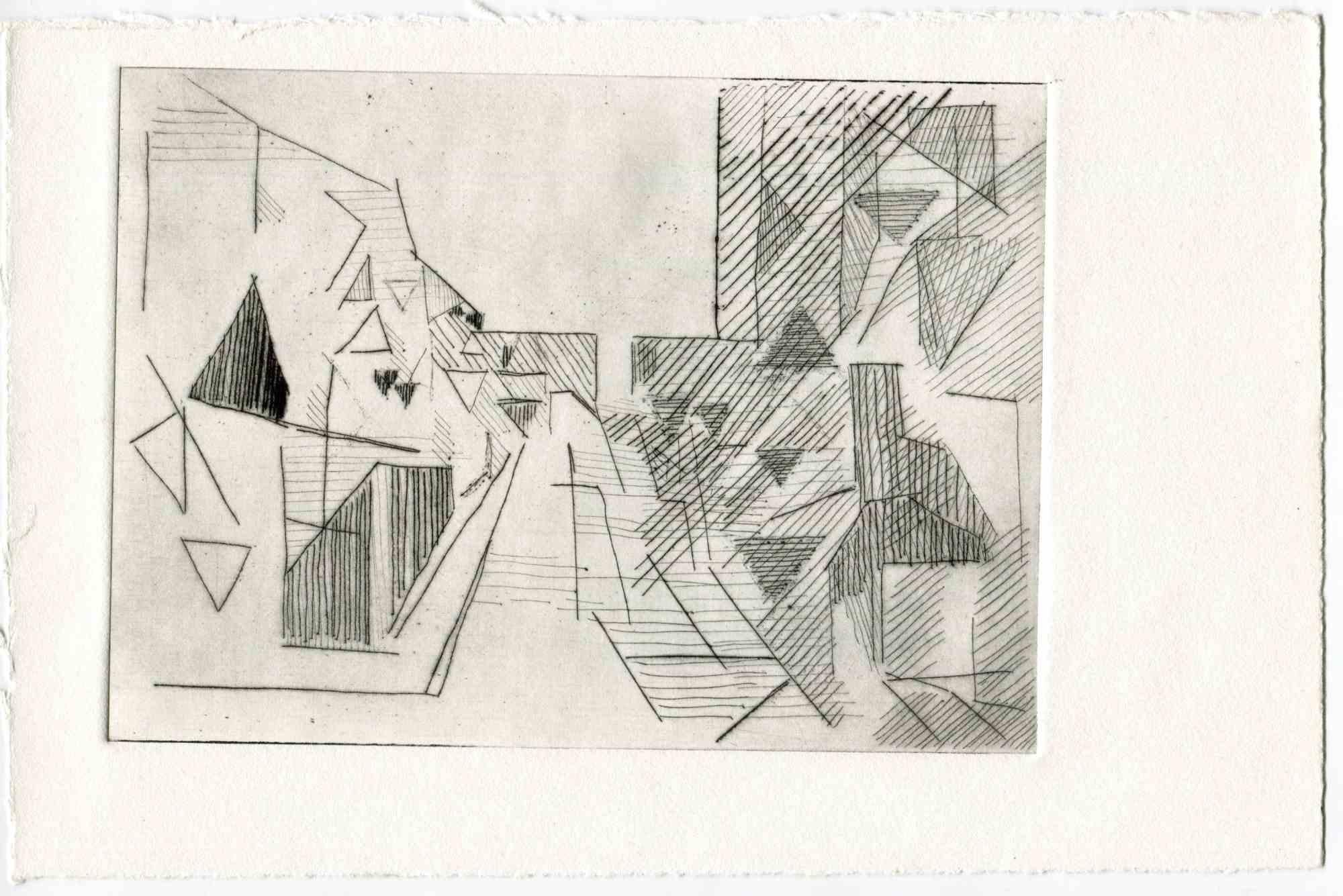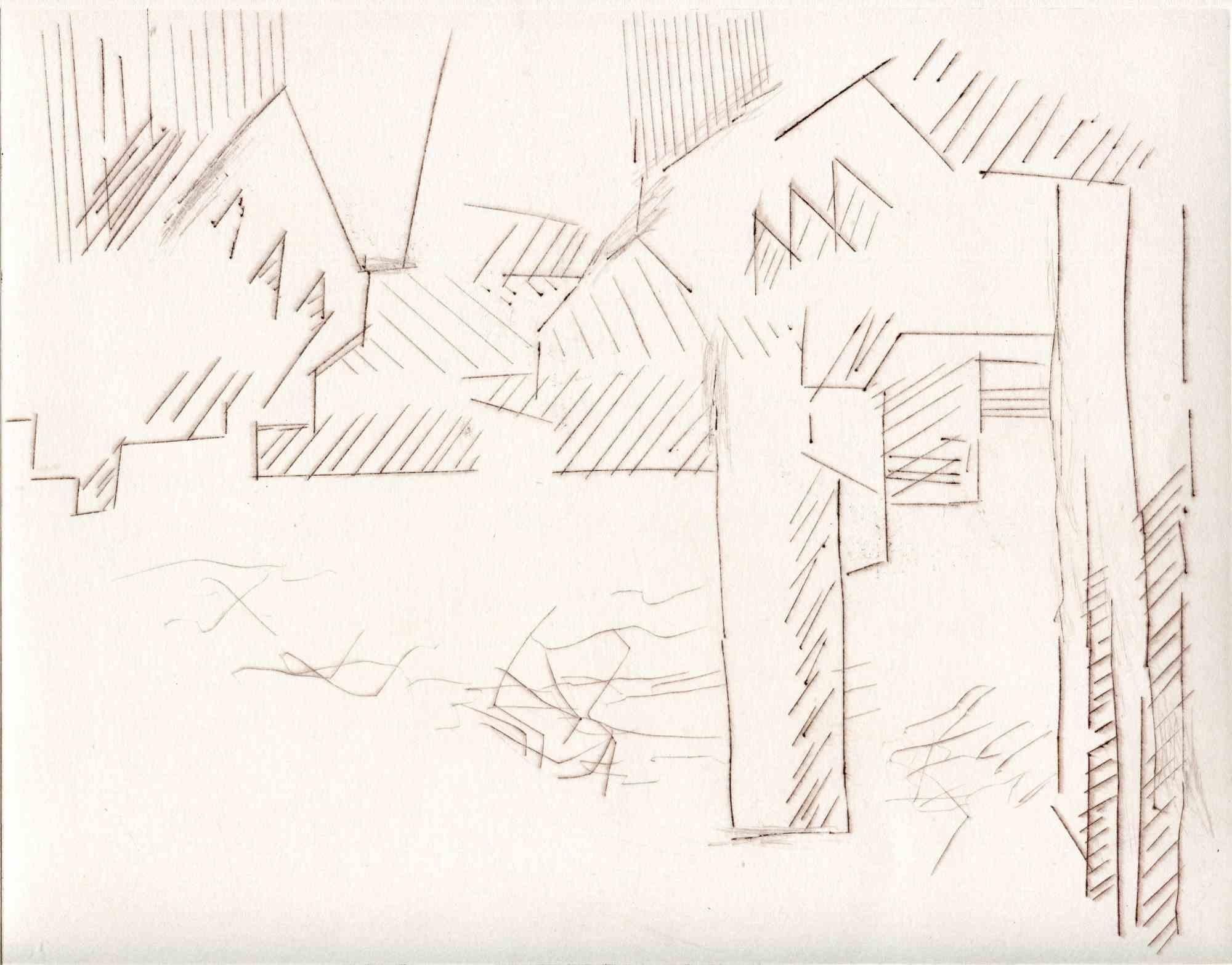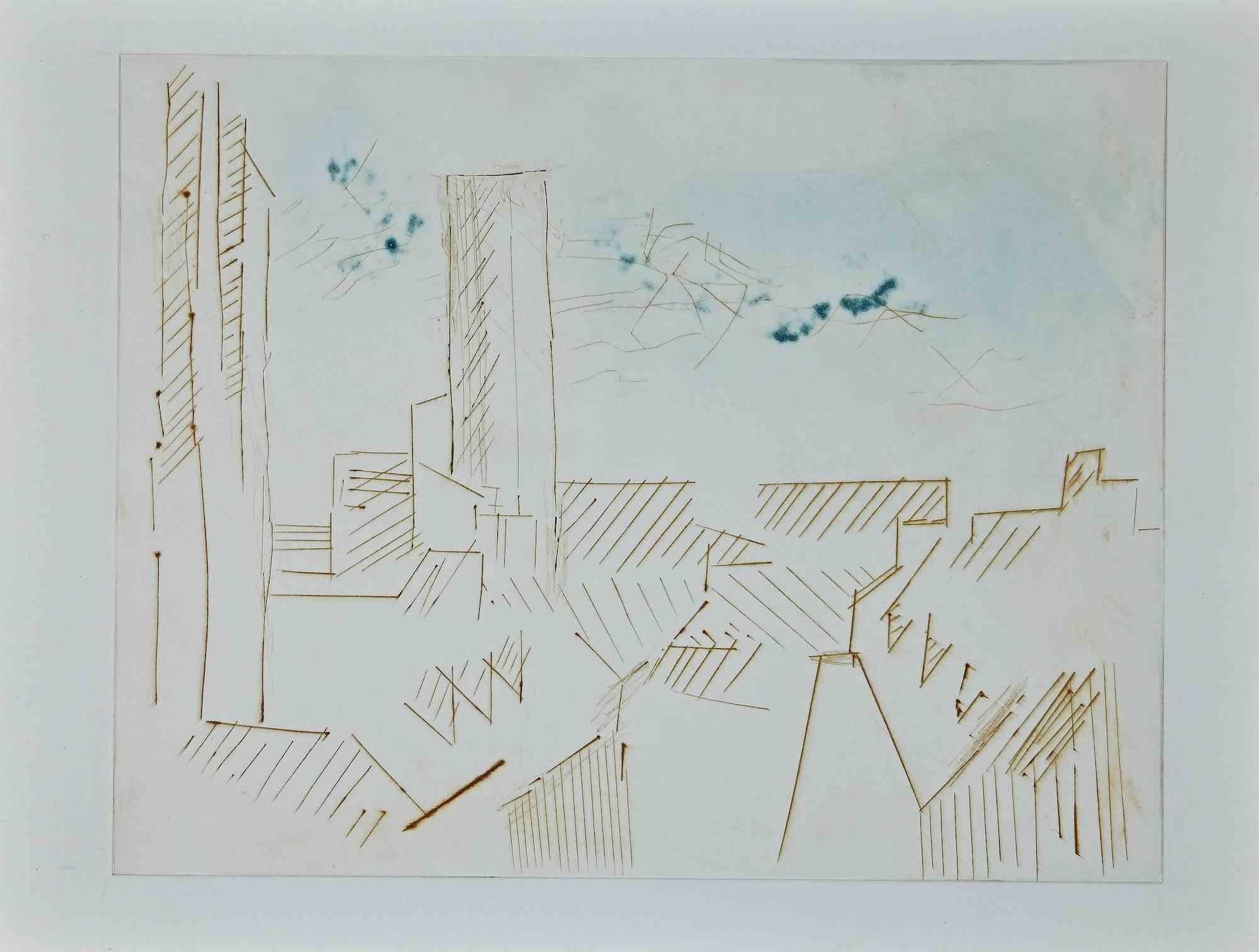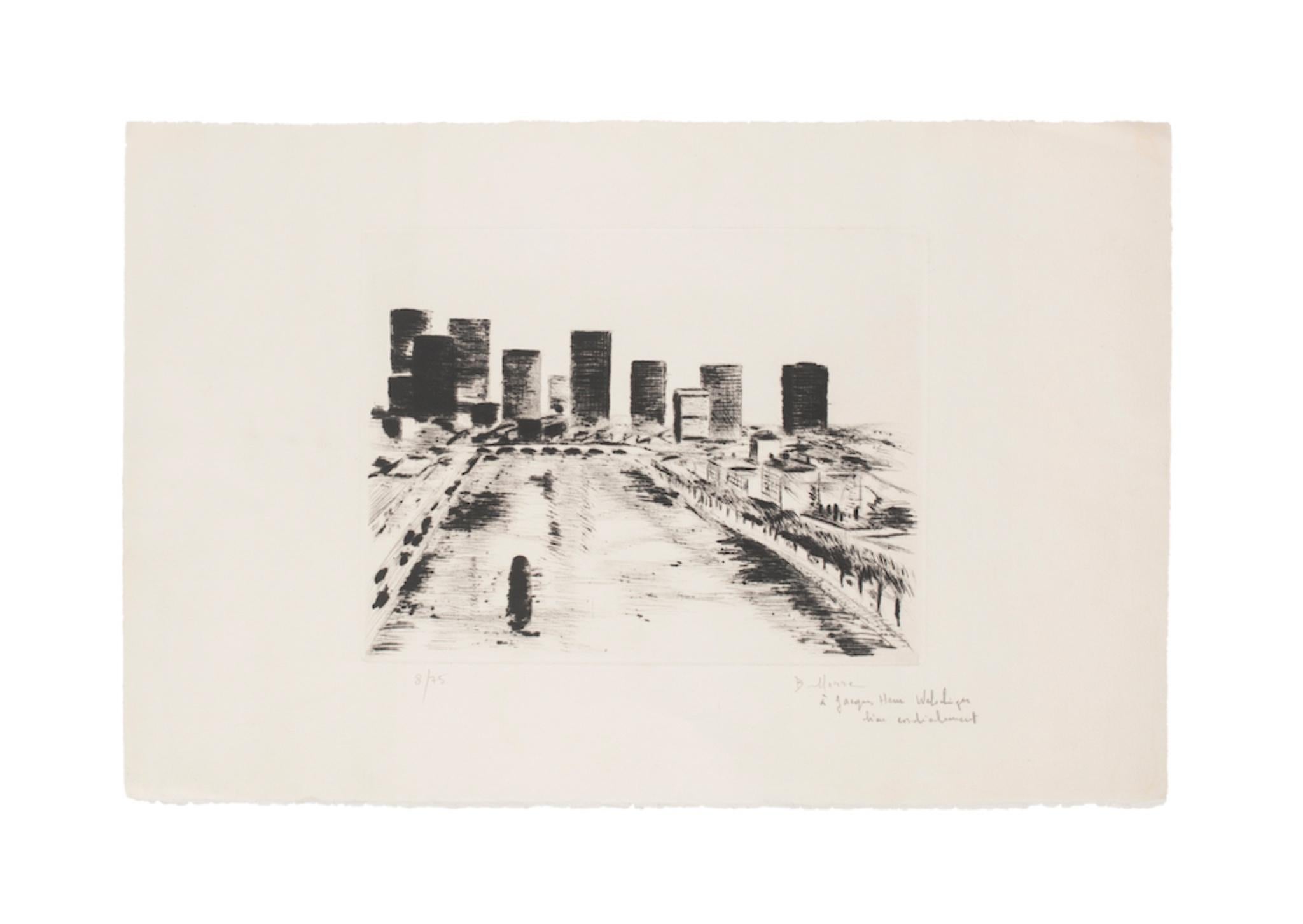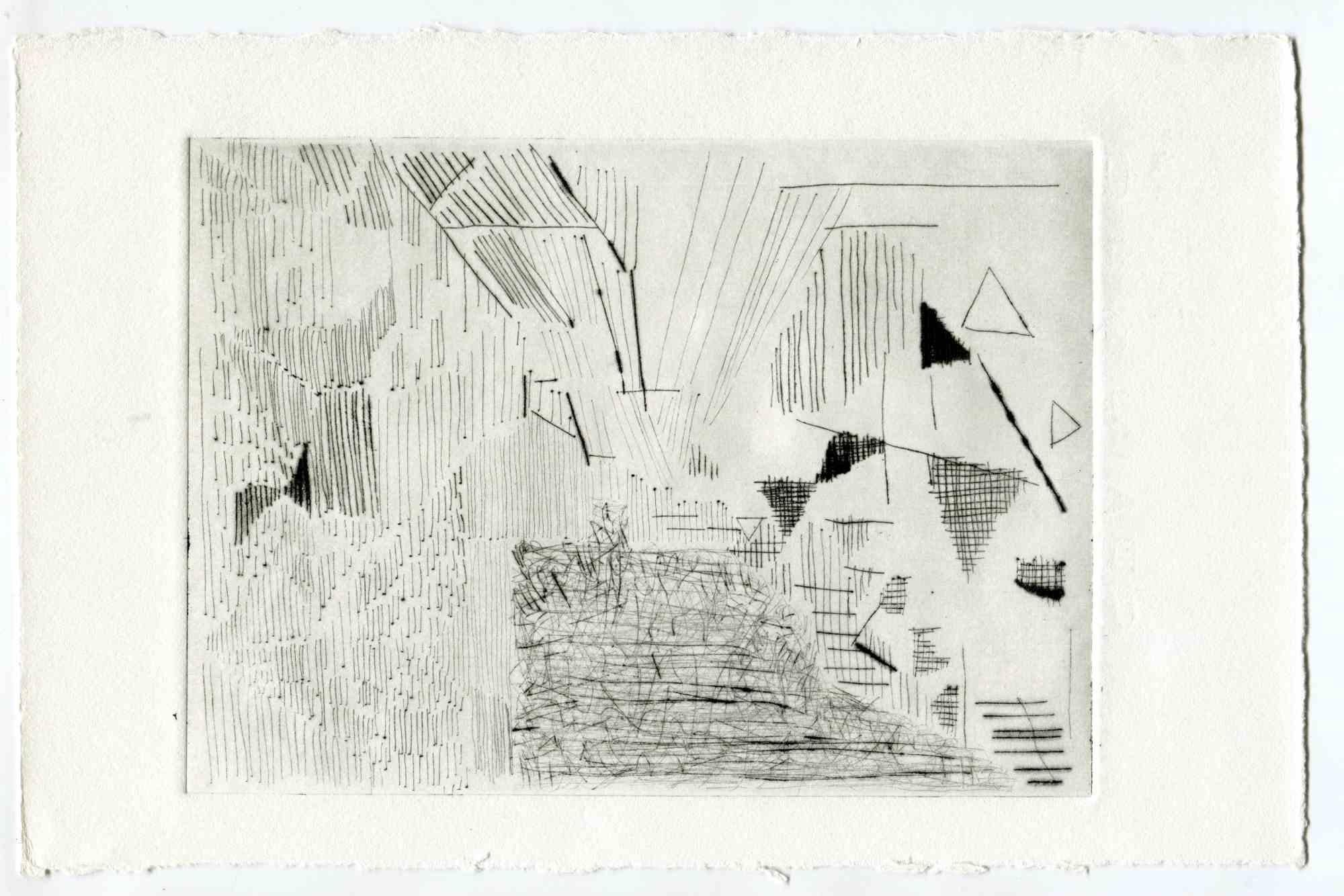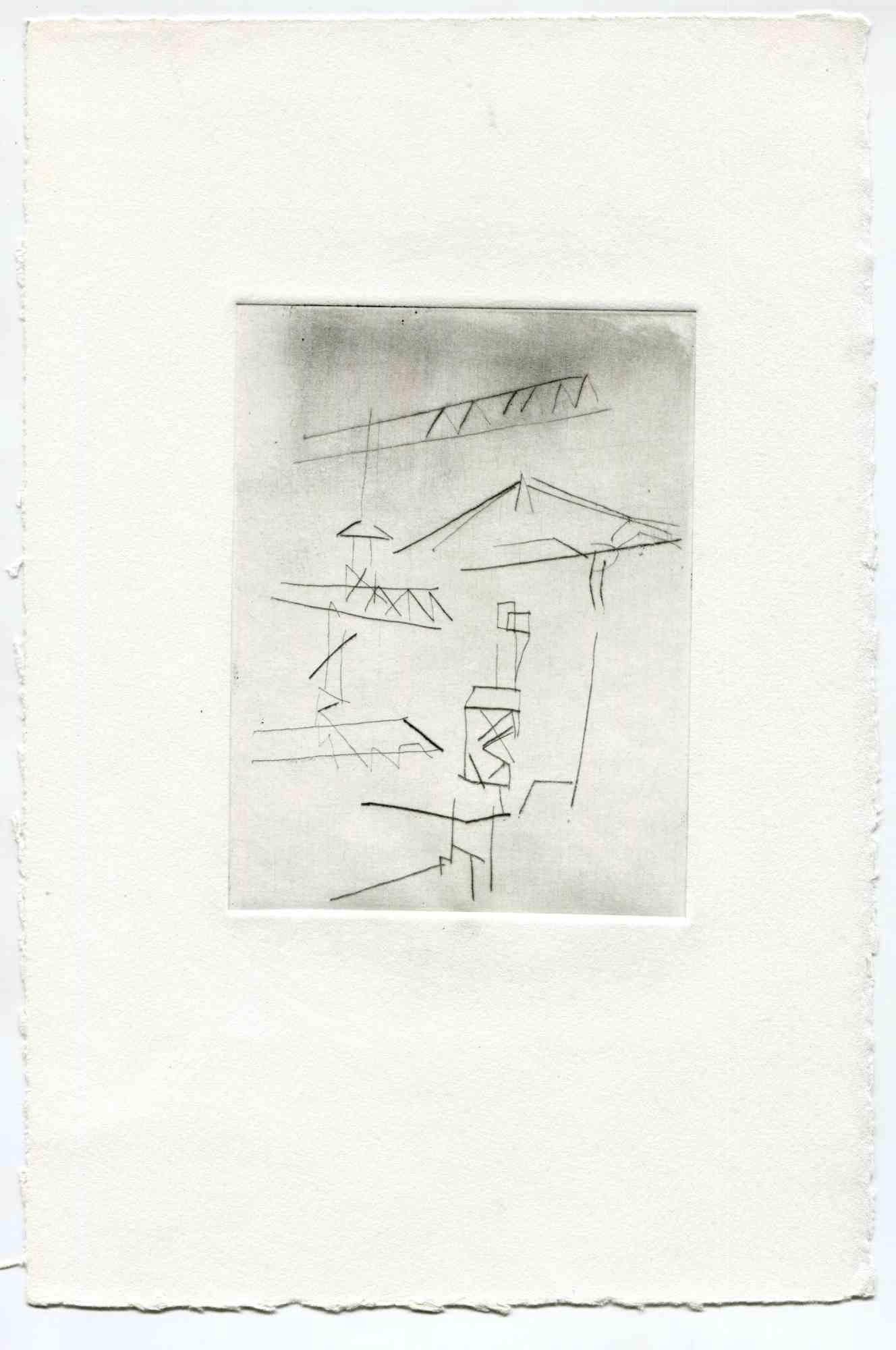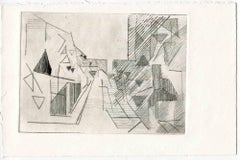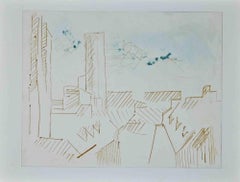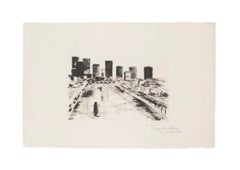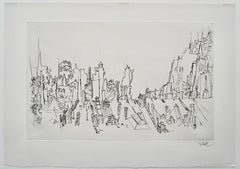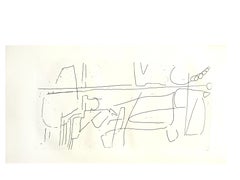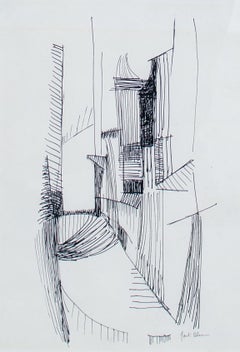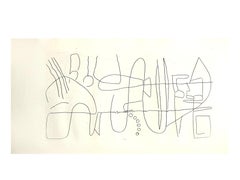Items Similar to City of future - Original Etching and Drypoint - Mid-20th Century
Want more images or videos?
Request additional images or videos from the seller
1 of 2
UnknownCity of future - Original Etching and Drypoint - Mid-20th CenturyMid-20th Century
Mid-20th Century
$239.04
£178.76
€200
CA$329.57
A$361.71
CHF 190.08
MX$4,304.25
NOK 2,429.82
SEK 2,220.38
DKK 1,524.08
About the Item
City of future is an original print in etching and drypoint on white paper realized by an Anonymous artist of the Mid-20th Century.
In good conditions.
The artwork created through deft strokes in perfect composition, resembling the Russian constructivism movement, it is characterized by well-defined hatching, beautiful presentation of architectural preciseness.
- Creation Year:Mid-20th Century
- Dimensions:Height: 9.85 in (25 cm)Width: 13 in (33 cm)Depth: 0.04 in (1 mm)
- Medium:
- Movement & Style:
- Period:
- Framing:Framing Options Available
- Condition:Insurance may be requested by customers as additional service, contact us for more information.
- Gallery Location:Roma, IT
- Reference Number:Seller: T-1211201stDibs: LU65038427752
About the Seller
4.9
Platinum Seller
Premium sellers with a 4.7+ rating and 24-hour response times
1stDibs seller since 2017
7,861 sales on 1stDibs
Typical response time: 1 hour
- ShippingRetrieving quote...Shipping from: Monaco, Monaco
- Return Policy
More From This Seller
View AllCity of Future - Original Etching and Drypoint - Mid-20th Century
Located in Roma, IT
City of Future is an original print in etching and drypoint on white paper realized by an Anonymous artist of the Mid-20th Century.
In very good conditions.
The artwork created through deft strokes in perfect composition, resembling the Russian constructivism...
Category
Mid-20th Century Modern Figurative Prints
Materials
Drypoint, Etching
City of the Future - Original Etching and Drypoint - Mid-20th Century
Located in Roma, IT
City of future is an original print in etching and drypoint on white paper realized by an Anonymous artist of the Mid-20th Century.
In very good conditions.
The artwork created through deft strokes in perfect composition, resembling the Russian constructivism...
Category
Mid-20th Century Futurist Figurative Prints
Materials
Drypoint, Etching
Cityscape - Original Etching - Mid-20th Century
Located in Roma, IT
Cityscape is an original etching and drypoint realized in the mid-20th Century by an anonymous artist.
Good Conditions.
The artwork is depicted through soft strokes in a well-balan...
Category
Mid-20th Century Modern Figurative Prints
Materials
Etching
Cityscape - Original Etching signed "Marra" - 20th century
Located in Roma, IT
Cityscape is an original etching print on paper realized by an unknown artista and signed "Marra".
Hand-signed in pencil on the lower right. Image Dimensions: 20.5 x 27 cm.
Numb...
Category
20th Century Modern Landscape Prints
Materials
Etching
Abstract Composition - Original Etching and Drypoint - Mid-20th Century
Located in Roma, IT
Abstract Composition is an original print in etching and drypoint on white color paper, realized by an anonymous artist of the Mid-20th Century.
In very good conditions.
The artwor...
Category
Mid-20th Century Modern Figurative Prints
Materials
Drypoint, Etching
Under Construction - Original Etching and Drypoint - Mid-20th Century
Located in Roma, IT
Under Construction is an original print in etching and drypoint on white paper realized by an Anonymous artist of the Mid-20th Century.
In very good conditions.
The artwork created ...
Category
Mid-20th Century Modern Figurative Prints
Materials
Drypoint, Etching
You May Also Like
“City Roofs” drypoint engraving by Peter Takal
By Peter Takal
Located in Berlin, MD
Peter Takal’s original drypoint engraving “City Roofs” is an accomplished work of art created in 1956. It is printed upon fine laid paper with full deckled margins as published in the limited edition of two hundred and fifty impressions. This engraving bears an embossed stamp “The Print Club of Chicago” on verso. This impression is signed by Takal in pencil. “City Roofs” is a fine example of the engraved art created by the 20th century Romanian / German / American artist, Peter Takal.
Peter Takal: Born in Romania in 1905, Peter Takal spent most of his youth in Berlin and was mainly self-taught. His first one-man exhibition took place in the Gurlitt Gallery, Berlin, in 1932. During the following seven years his art was frequently exhibited at galleries in Berlin, Munich, Paris and as well as Casablanca and Algiers. At the beginning of the Second World War (1939), Peter Takal came to the United States for an exhibition of his art at the Katherine Kuhe Gallery, Chicago. He decided to remain in the United States and became an American citizen in 1944.
Living in New York, Peter Takal quickly established himself as a leading printmaker and a modern master of both lithography and drypoint engraving. One-man exhibitions of his art took place in New York City (1942), Chicago (1939 & 1941), Washington (1959) and Los Angeles (1966). International exhibitions of his art were held at the Galeria de Arte Mexicano, Mexico City (1959), the Palazzo Strozzi, Florence, Italy (1960) and at the Kestner-Museum in Germany (1962). Museums to date that include Peter Takal's original prints in their collections are, the Chicago Art Institute, the Library of Congress, Washington, the Los Angeles County Museum of Art, the United States State Department, UCLA, the Berlin National Museum and the Bibliotheque Nationale, Paris. Over the years, the Museum of Modern Art in New York and the Arkansas Arts Center have acquired a very extensive collection of Peter Takal's lithographs and drypoints. The artist died in 1995.
The Print Club of Cleveland: Trees and Fields is an original lithograph commissioned by the Print Club of Cleveland in 1957 and published in a signed edition of 250 impressions. The Print Club of Cleveland is a non-profit adjunct organization and the country's first museum-affiliated print club devoted to the promotion of art and printmaking as a fine art for printmakers and collectors alike. With its creation in 1919, it has helped to support the growth of the department of prints and drawings at the Cleveland Museum of Fine Arts and has also been a source of great enrichment for collectors of fine prints. During the organizations long history, the club has annually commissioned one original etching engraving, lithograph, woodcut and or other form of original graphic art from such fine American artists as John Taylor Arms, Suzanne Anker, Luigi Lucioni, Will Barnet, Mark Tobey, Lyonel Feininger, Henry George Keller, Louis Lozowick, Karl Schrag, David Jansheski, Deborah Remington, and Peter Takal, as well as from leading international artists such as Henri Matisse, Edmund Blampied, Jean-Emile Laboureur, Salvador Dali, Michael di Cerbo, Phyliss Sloane, Paolo Boni, Juvenal Sanso...
Category
Mid-20th Century Abstract Landscape Prints
Materials
Drypoint
André Lanskoy - Composition - Original Etching
By André Lanskoy
Located in Collonge Bellerive, Geneve, CH
André Lanskoy - Composition - Original Etching
From Dédale
Edition: 190
Dimensions: 32 x 18 cm
This etching is from the first series of etching Lanskoy made.
Unsigned and unumbered ...
Category
1960s Abstract Expressionist Abstract Prints
Materials
Etching
1960s Illegibly signed surrealist ink drawing
Located in New York, NY
Unknown Artist
Untitled, c. 1960s
Ink on paper
Sight size: 10 x 7 in.
Framed: 15 1/4 x 12 1/4 in.
Signed illegibly lower right: Jack Bl...?
Category
1960s Surrealist Abstract Drawings and Watercolors
Materials
Paper, Ink
André Lanskoy - Composition - Original Etching
By André Lanskoy
Located in Collonge Bellerive, Geneve, CH
André Lanskoy - Composition - Original Etching
From Dédale
Edition: 190
Dimensions: 32 x 18 cm
This etching is from the first series of etching Lanskoy made.
Unsigned and unumbered ...
Category
1960s Abstract Expressionist Abstract Prints
Materials
Etching
André Lanskoy - Composition - Original Etching
By André Lanskoy
Located in Collonge Bellerive, Geneve, CH
André Lanskoy - Composition - Original Etching
From Dédale
Edition: 190
Dimensions: 32 x 18 cm
This etching is from the first series of etching Lanskoy made.
Unsigned and unumbered ...
Category
1960s Abstract Expressionist Abstract Prints
Materials
Etching
André Lanskoy - Composition - Original Etching
By André Lanskoy
Located in Collonge Bellerive, Geneve, CH
André Lanskoy - Composition - Original Etching
From Dédale
Edition: 190
Dimensions: 32 x 18 cm
This etching is from the first series of etching Lanskoy made.
Unsigned and unumbered ...
Category
1960s Abstract Expressionist Abstract Prints
Materials
Etching
More Ways To Browse
Tell Me Beautiful Untrue Things
Tomikichiro Tokuriki On Sale
Toulouse Lautrec Napoleon
Ulivieri Uliviero
Vadik Suljakov
Vintage 5 Amp
Vintage Heinz Beans
Vintage Yellow Stop Sign
Von Stuck Lucifer
W. L. Walton On Sale
Warhol Christmas Tree
Warhol Lamentation
Warhol Superman
Warhol Volkswagen
Watercolor Paint Kit Warhol
Whistler Nude Model
Whistler Rotherhithe
Who Stole The Tarts
